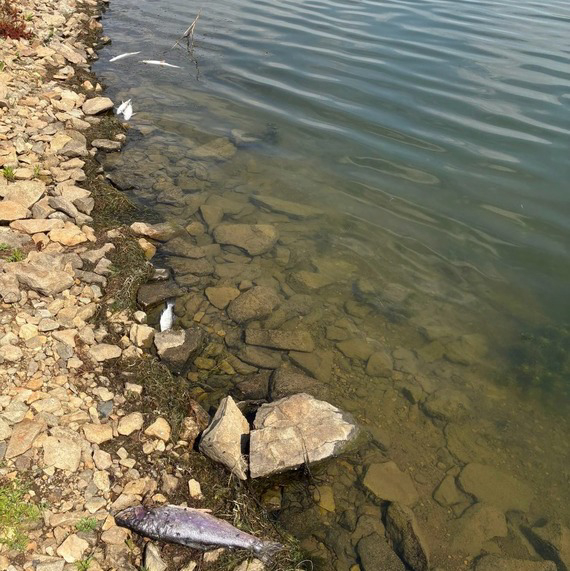
|
Montana Fish, Wildlife & Parks is receiving several reports of dead rainbow trout at Faber Reservoir 25 miles south of Chinook in Blaine County. FWP officials believe this is most likely due to a natural event caused by low dissolved oxygen levels in the pond. There is no current concern for human or pet health and safety and fish may still be harvested from the pond.
“Fish, like humans, need oxygen to survive,” says Tyler Haddix, Region 6 fisheries manager. “Most summer fish kills are natural events that occur when dissolved oxygen in a waterbody becomes depleted, often due to changes in temperature, weather, or aquatic vegetation processes.” Those declining oxygen levels can oftentimes lead to fish stress and, ultimately, fish mortality.
While relatively shallow reservoirs and ponds in eastern Montana are extremely productive for growing fish, the same productivity can lead to periods of low dissolved oxygen. Aquatic vegetation becomes more abundant in the summer and while it creates habitat for bugs and other organisms that fish feed on, it can have a huge influence on the dissolved oxygen levels within a waterbody.
During the day when the vegetation is soaking up rays of sun, the plants are producing oxygen. However, at night and during periods of low light, the plants are respiring and producing carbon dioxide. In addition, water temperatures during the summer are much warmer which hampers water’s ability to hold oxygen. These processes in combination can lead to severely depleted oxygen levels and ultimately sometimes fish kills.
“So far, rainbow trout are the only species that have been observed dead at Faber Reservoir,” adds Cody Nagel, fisheries biologist in Havre. “This is probably due to rainbow trout needing higher dissolved oxygen levels than the smaller minnow species that also reside in the reservoir.” FWP will look at restocking Faber Reservoir with rainbow trout as soon as they can.
What can anglers do?
Anglers who see dead or dying fish can report them via FWP’s online portal: sickfish.mt.gov. These reports are helpful for biologists to understand what anglers are seeing on the water and to be able to respond if necessary. Anglers can also contact a local FWP office with specific information including location, date, number and species of fish, and if possible, photos and any other relevant information. This information will help biologists determine if the event was natural or the result of accidental or unauthorized human actions.
Fish kills can occur year-round due to a variety of factors, including dissolved oxygen depletion, extreme water temperatures, fish diseases or the introduction of pollutants.